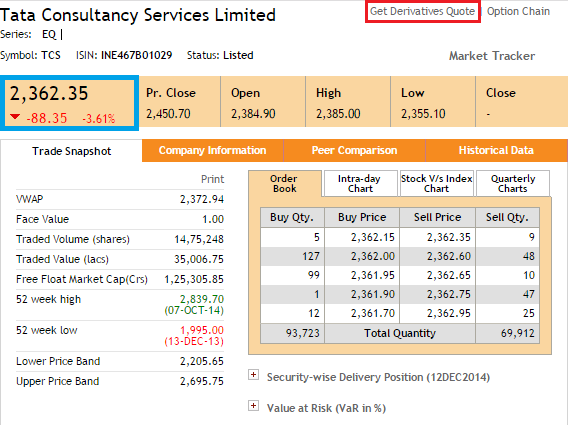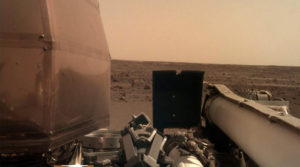The Futures Trade
Remember, the motivation for any trader entering into a futures agreement is to benefit financially, and for which the trader needs to have a directional view on the price of the underlying asset. Perhaps it is time we take up a practical example of a futures trade to demonstrate how this is done. Also, I guess we should move away from the Gold example and look into an example related to the stocks.
Today (15th Dec 2014) the management of Tata Consultancy Services (TCS), a leading Indian Software Company had an investors meet, wherein the TCS management announced that they are cautious about the revenue growth for the December Quarter. The markets do not like such cautious statements, especially from the company’s management. After the statement, the markets reacted to it and as we can see from the TCS’s spot market quote, the stock went down by over 3.6%. In the snapshot below, the price per share is highlighted in blue. Ignore the red highlight, we will discuss about it shortly.






